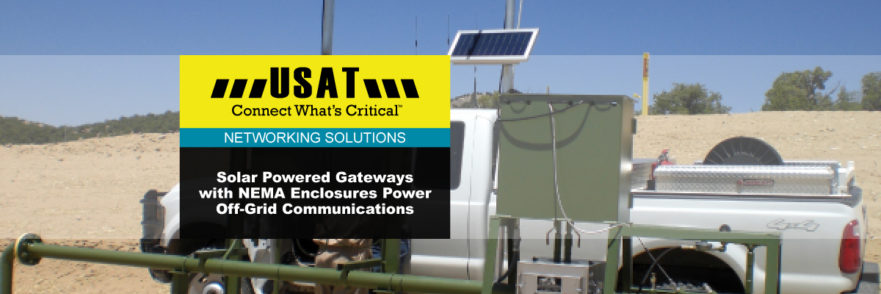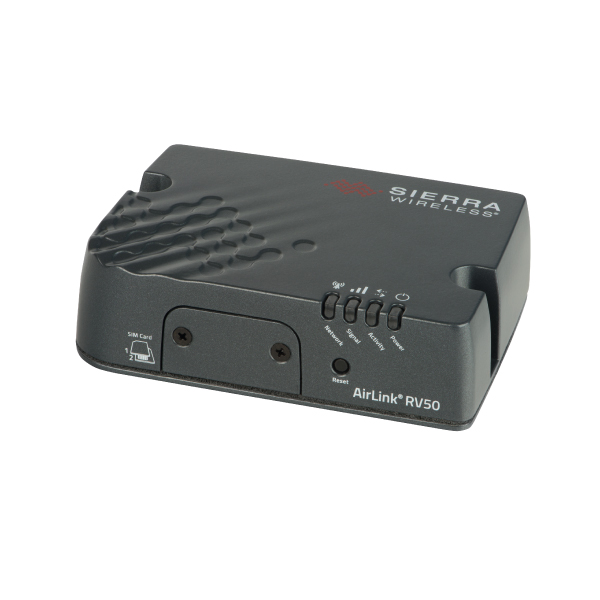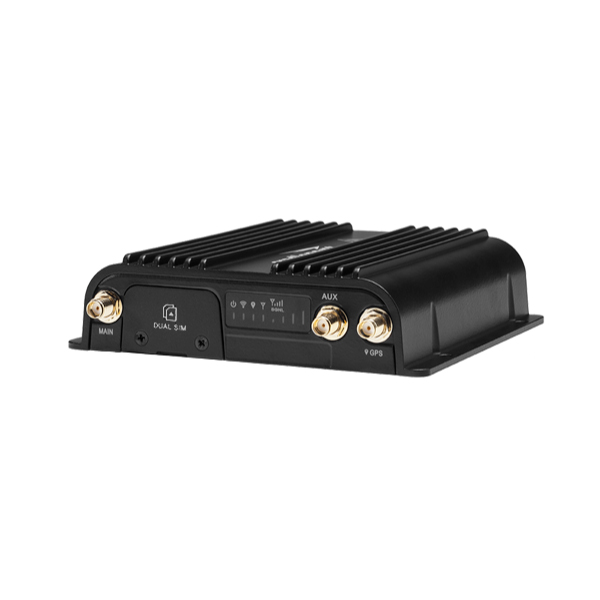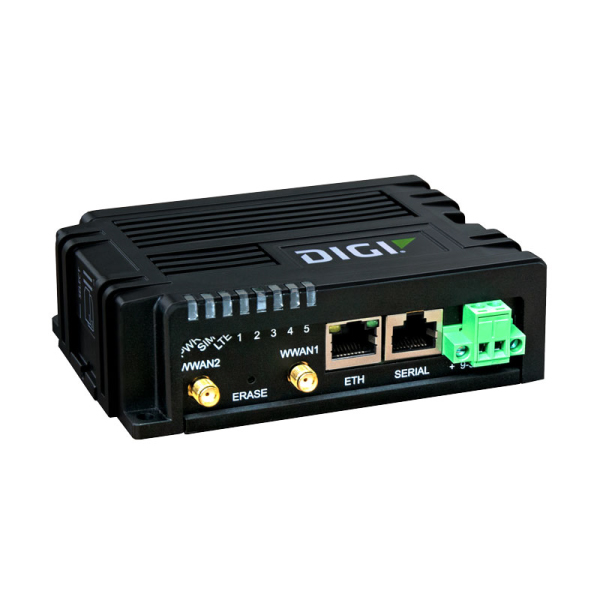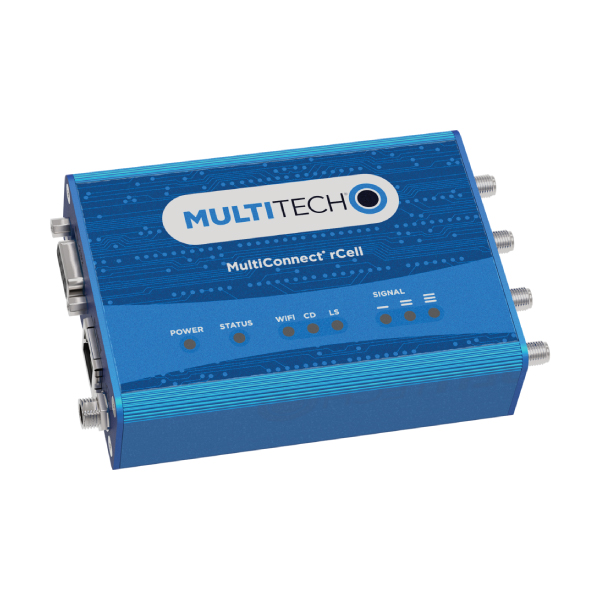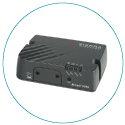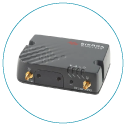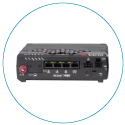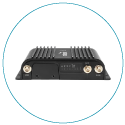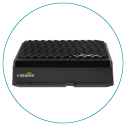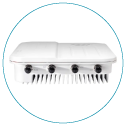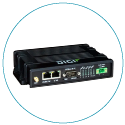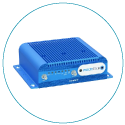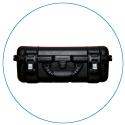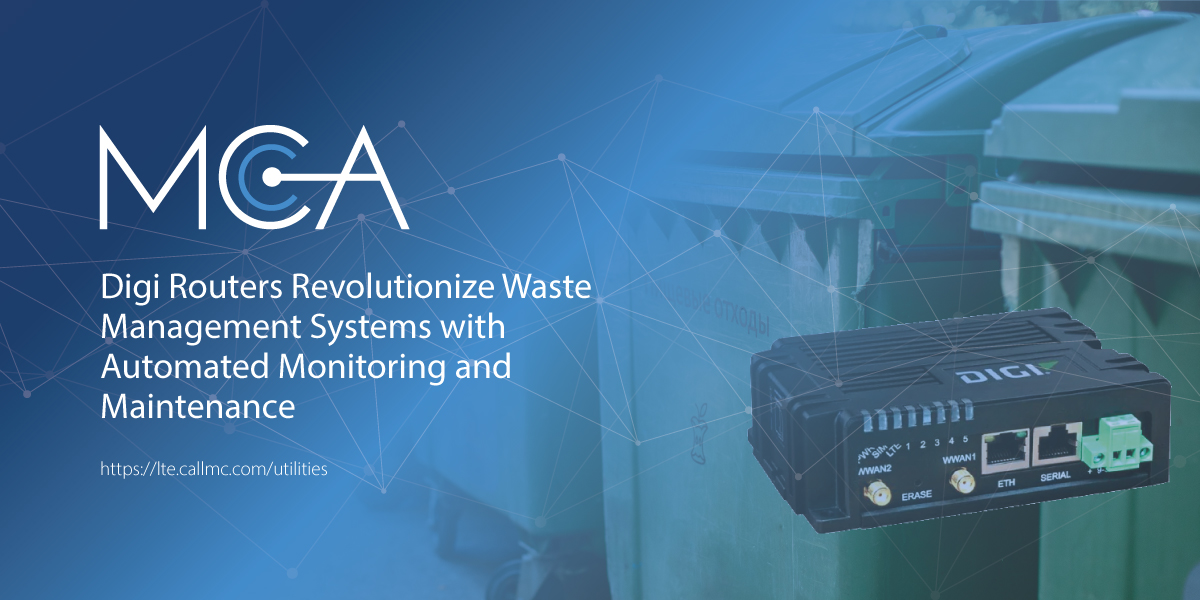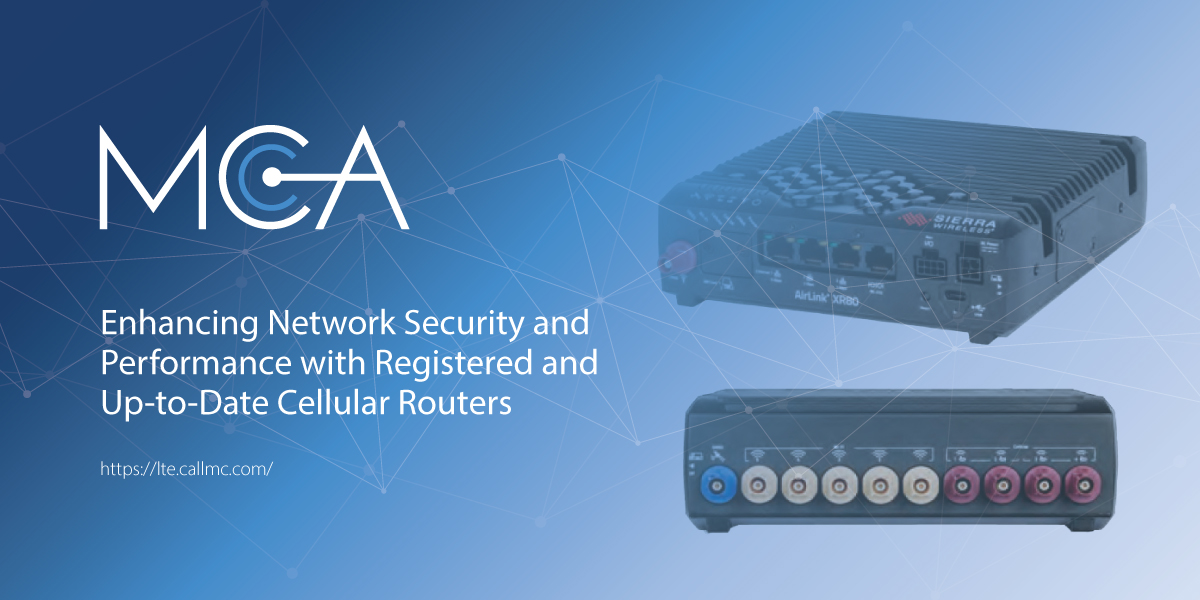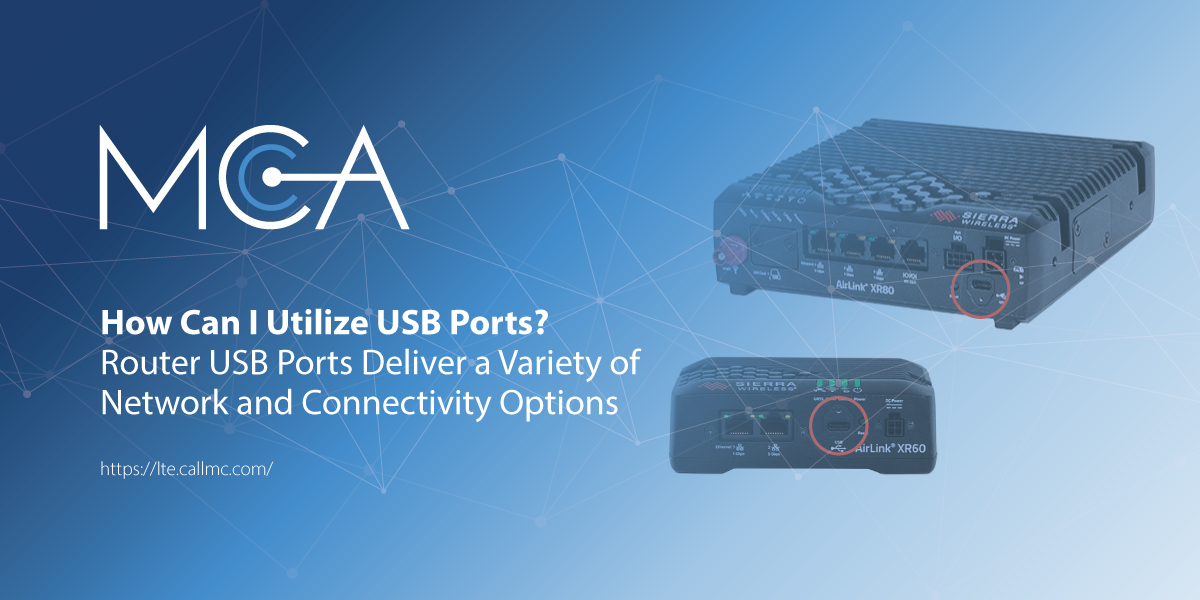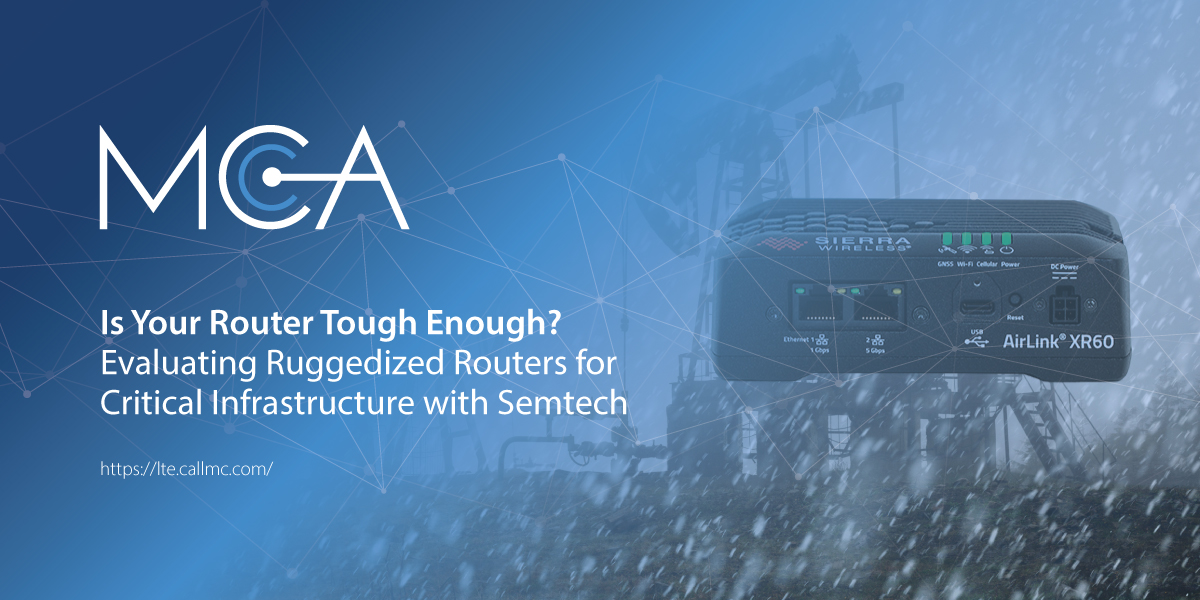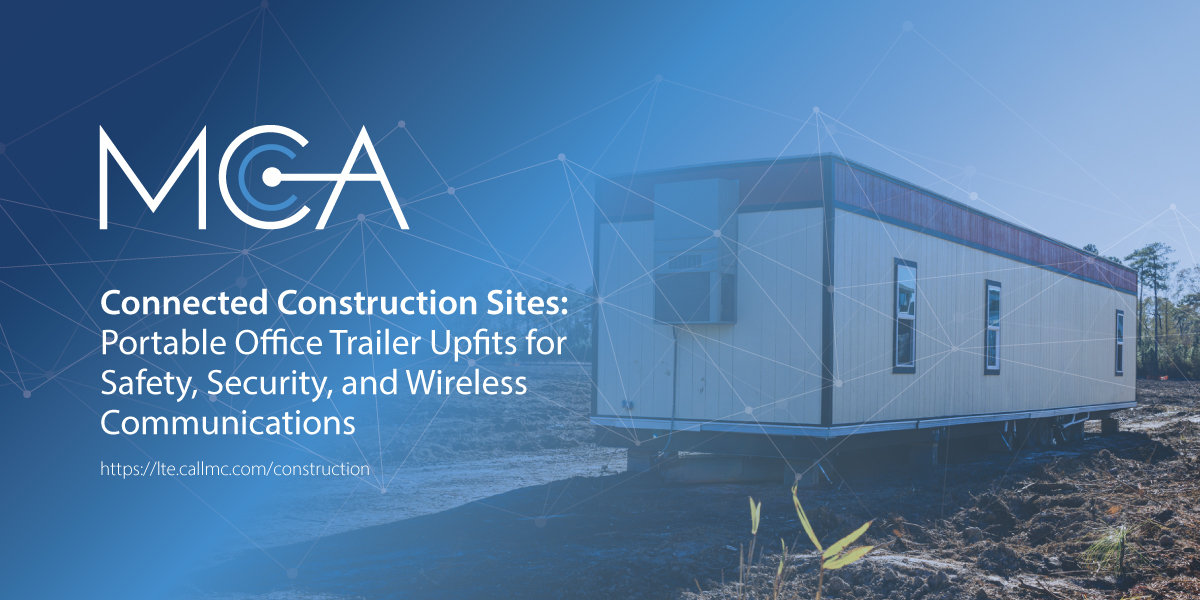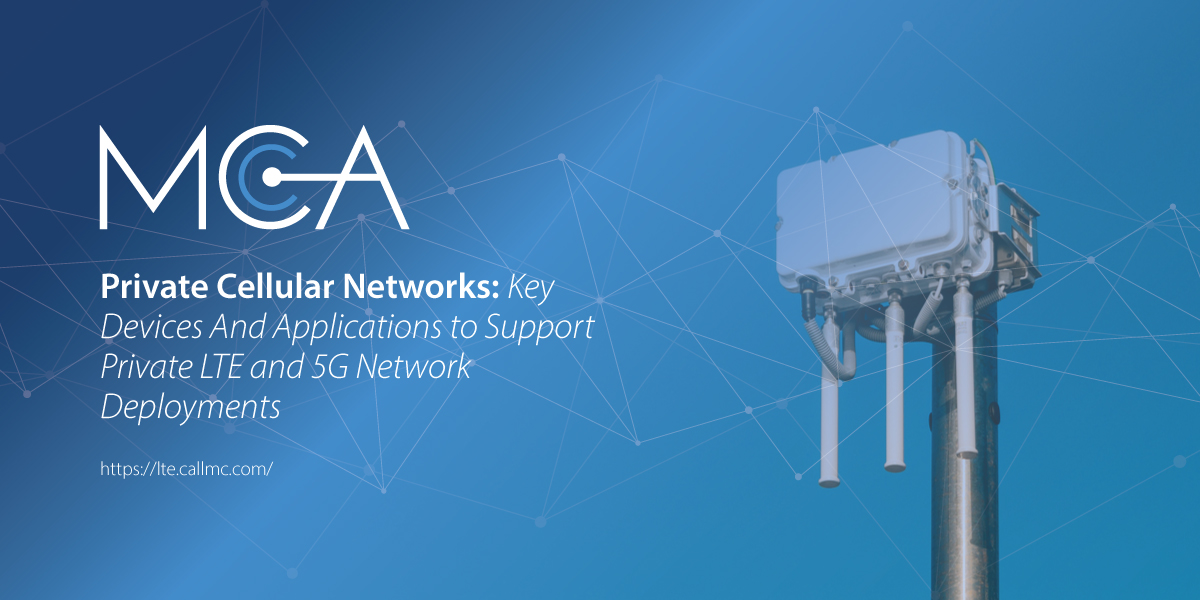How Is a Solution Considered Wireless If It Needs to Be Plugged Into a Grid Power Source?
We are fielding more and more calls from clients looking to have wireless devices be truly wireless. Data goes over the air; we have that part nailed. However, the electricity to power the device comes from a wire stretched to a transformer through the transmission and distribution plant of the electric utility—power is hardwired and dependent on the “grid”. The answer to being wireless is gathering energy from the sun and storing an adequate supply local to the device. This solution has the added benefit of removing the dependence on grid power and shielding the wireless router gateway from area power supply outages.
Much time is spent considering the cost per watt of solar. In off-grid wireless applications, however, the cost of the solar system is offset by the often costlier alternative—having a transformer and meter installed and running wires to an electric distribution pole. In some instances, having hardwired electricity installed isn’t an option. In others, the time and costs required for construction permits, permissions to crossroads, streams, and property all contribute to making the lead time and cost untenable.
TABLE OF CONTENTS
How Is a Solution Considered Wireless If It Needs to Be Plugged Into a Grid Power Source?
Solar Photovoltaic is an Excellent Match
Wireless Data Communications Solution with Solar Arrays
Operating Wireless Gateways & Cellular Routers Off-Grid with Solar PV Electric
Solar PV Panel
PV Panel Mount
Solar Charge Controllers
Battery
NEMA Enclosure
Solar Photovoltaic is an Excellent Match
Wireless Data Communications Solution with Solar Arrays
We can also attach other power drains to the system without making the solar setup unwieldy. It all comes down to modeling the demand and understanding the nuances of solar, all while choosing the attached equipment carefully. Our systems are often paired with one or two cameras for remote situational awareness, RADAR to sense traffic issues, and Power-Over-Ethernet (POE) to power other network-aware equipment and sensors.
One concern some might raise is the longevity of the solar equipment. Most of our photovoltaic panels have a 25-year lifespan warranty to retain 75% of their generation capability for this duration. Sealed gel and Absorbed Glass Mat ‘solar batteries’ are carefully chosen for outdoor enclosures across broad temperature swings and carry 5-year warranties. We use charge controllers, such as those by Morningstar, that monitor ambient temperature and adjust charging rates automatically; this further protects the batteries.
Solar is an excellent and reliable power source for making wireless modem setups genuinely wireless. The essential ingredient is an experienced partner who understands wireless data and solar power used in small off-grid applications.
Operating Wireless Gateways & Cellular Routers Off-Grid with Solar PV Electric
The intelligent wireless gateway and router, often called a wireless modem, is perfect for connecting where no wireline data is available. Therefore, it is logical to connect the wireless wide area network modem where there is no grid electricity readily available. The solution is to harvest energy from the sun using solar photovoltaic cells. USAT architects and assembles single-panel systems that use a pole-mounted panel, a NEMA enclosure, and a battery array to power a wireless modem and connected equipment.
NEMA Box with Solar PV Electric ArrayIt is essential to consider what equipment will be attached along with the wireless modem/intelligent gateway. Consult your USAT sales representative before selecting the attached equipment, as disparate voltages, native AC-powered devices, and high-draw equipment can force the solar assembly to be oversized and cost-prohibitive. For example, if you need to attach an IP Pan-Tilt-Zoom camera to the off-grid system, USAT can suggest low-current PTZ cameras that work well with solar assemblies. A similar example is network switches. Switches designed for 12Vdc or 24Vdc, or POE systems should be selected, and these should be rated for a broad operating temperature, for example -40C to +60C.
Calculating modem power demand is based on measuring the known power consumption characteristics of the gateway. These can be broken down into power demands for four states: Transmit, Receive, Idle, and Power Save. USAT examines data usage, keep-alive pings, and other modem activity to calculate the daily consumption and a variance factor to create both the maximum demand and the average the modem will have.
USAT has modeled modem power consumption characteristics for many makes of wireless equipment, including:
T-Mobile’s and AT&T’s networks vary in energy consumption from Verizon’s network. Likewise, 4G and 5G present different module consumptions when compared to older 3G Networks. Each device has unique power requirements, varying based on the intended application. For some installations, LPWA technologies like NB-IoT, Cat M1, or LoRaWAN communications may be a better fit.
Let USAT size the system for you leveraging our engineering expertise specific to solar and wireless data applications.
The core elements of an off-grid solar photovoltaic system are as follows:
- Solar PV Panel
- PV Panel Pole Mount
- Solar Charge Controller
- Deep Cycle Solar Battery
- NEMA Enclosure
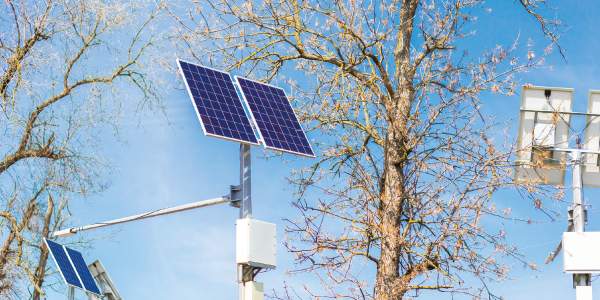
Solar PV Panel
The Solar photovoltaic panel harvests electricity from the sun. Quality and efficiency vary widely from manufacturer to manufacturer. Panels often use polycrystalline silicon, monocrystalline silicon, amorphous silicon, cadmium telluride, and copper indium (di)selenide/sulfide (CIGS).
NEMA Box with Solar PV Electric Array CIGS has the highest absorption coefficient of solar modules and helps harvest energy in sub-optimal conditions, such as on cloudy and overcast days, and has high efficiency and carries a high cost per watt. Monocrystalline thin-film solar cells are often more expensive than multi-crystalline or polycrystalline-based cells but have a greater efficiency which is useful for wireless off-grid installations and provides a balanced price to performance.
While researching ratings, consider whether the wattage is rated as PTC or STC. PTC or PVUSA Test Conditions uses a known constant developed by NREL (National Renewable Energy Labs). STC, or Standard Test Conditions, uses a methodology that produces higher results. Generally, PTC is held to be more reflective of real-world solar and climatic conditions.
Understand the efficiency of the panel. An efficient panel should be used on a pole-mounted system to ensure that one or two panels can power the system.
The panel must have its performance characteristics available, and these should follow a known standard such as PTC mentioned above.

PV Panel Mount
For the panel installation, pole mounts will house up to a specific Watt size in a single panel for a compact pole mount installation. These can be installed so the pole has two panels with minimal shading impact on the lower panel. Larger panels may require different bracing for the pole and mount. Panels will install angled toward the equator.
For North America, this array azimuth is 180 degrees, due south. You should have clear access to the sun in a southerly facing mount. Other compass headings are feasible with a corresponding loss in productivity. Their pitch or array tilt angle is based on the location they are used in and how the system is optimized.
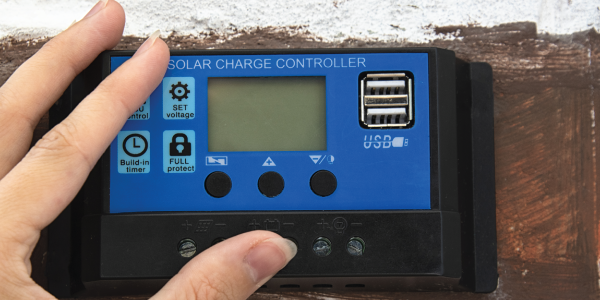
Solar Charge Controllers
These take solar energy and charge the battery storage in the system and provide electricity to the system equipment (modems, cameras, meters, sensors, etc).
It is essential to determine the critical array yield, the operating temperature requirement, and if the controller will be used in a hazardous location (Class 1, Division 2, Groups A-D, such as needed for oil & gas industry application).
Two major charge controller technologies are MPPT (Maximum Power Point Tracking) and PWM (Pulse Width Modulation) charge controllers. At USAT,, when installing solar bundles into areas of low minimum solar radiation or with numerous pieces of equipment drawing on the solar system, we rely on MPPT controllers to contain the number of solar PV panels needed.
MPPT charge controllers maximize the yield from a panel by harvesting from the peak point of the PV array. The MPPT then converts the power to a charging voltage for the battery and boosts the power when needed. USAT often specs MPPT charge controllers with a 97% or a 99% efficiency rating and a very low self-consumption rate. These are very useful when the yield from one or two panels must be maximized when adding another solar panel is not practical.
MPPT charge controlled benefits from using numerous power points during shading, sunrise, and sunset, from the very fast sweeping of the entire solar i-v curve, and from the most robust production during low solar insolation times. These often have temperature sensors that can adjust the charging temperature of the battery based on the ambient temperature inside the enclosure. Solar sizing can be completed in watts since the panel will be fully utilized.
PWM charge controllers connect the array directly to the charged battery, therefore operating the array at the battery voltage. The controller should have a 4-stage battery charging capability to maintain optimal battery life and charge state.
Array sizing must be done in amps, as less power is available for charging the battery.
USAT can also send over the Wireless WAN modem solar operation information, alerts, and state triggers when a smart charge controller is used. The controllers can also communicate on Modbus and other standards.
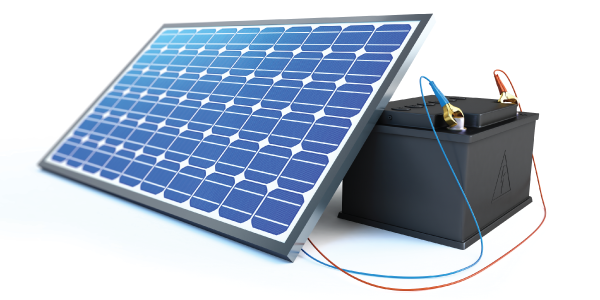
Battery
Specify an Absorbed Glass Mat (AGM) gel-type sealed, a maintenance-free battery designed for solar applications. These are non-gassing, so enclosure venting becomes less critical to prevent gaseous buildup. These also are not susceptible to freezing and have a greater lifespan when compared to wet batteries. These batteries can carry DOT, IATA, ICAO, and IMDG approvals, so they may be transported by land, sea, and air.
The battery should be rated for temperature extremes present in an outdoor enclosure. It should carry a warranty that covers a published derate (decay) factor based on age that does not exceed 25%.
The charge controller can monitor the battery for optimizing charging voltage based on the ambient temperature.
Always collect the table of discharge rates for the battery chosen. An extended discharge time should often be chosen, and the temperature present at discharge should be considered when modeling solar panel array size requirements.
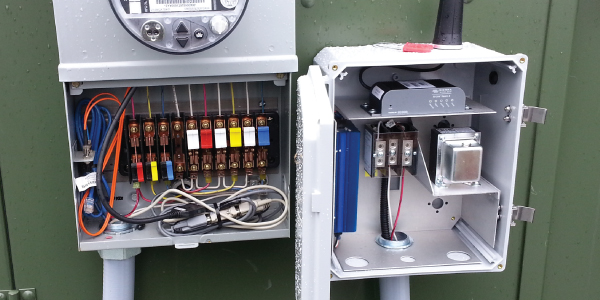
NEMA Enclosure
This should be a NEMA enclosure with an IP (Ingress Protection) rating sufficient to keep the enclosed equipment safe from the elements (search for IP rating in USAT’s common questions for more info).
Glass polycarbonate is the preferred material for the NEMA enclosure. Unless in areas with high security or vandalism risks, glass polycarbonate enclosure is sufficiently durable and conducts less heat to the enclosed equipment.
The enclosure should also be vented. Venting allows excess heat to be passively removed and facilitates pressure equalization in changing weather conditions. Venting can be accommodated while still maintaining the unit’s IP rating by the use of labyrinthine vents.
Generally speaking, active venting is not suggested. Active venting uses fans to force air out of the box. Fans have the disadvantage of drawing environmental elements into the box, including dust, airborne particulates, humidity, and water. Fans also draw more electricity and can fail over time. They should be thermostatically controlled fans and highly energy efficient if they must be used.
USAT has designed NEMA enclosures for use with WWAN modems. These assemblies have backplanes, batteries, and venting designed explicitly for field wireless use.
About USAT
For over 25 years, USAT has provided mobile communications solutions for various retail applications across the USA. With our extensive catalog of world-class routers, gateways, and software designed for remote monitoring and management in even the harshest environments — you can count on us to get and keep you connected.
Better mobile connectivity translates to less manual equipment maintenance, reduced downtime, and an overall increase in your business’s ROI. Contact the experts at USAT to learn how our wireless networking solutions can help meet your organization’s exacting needs.
Share this Post
